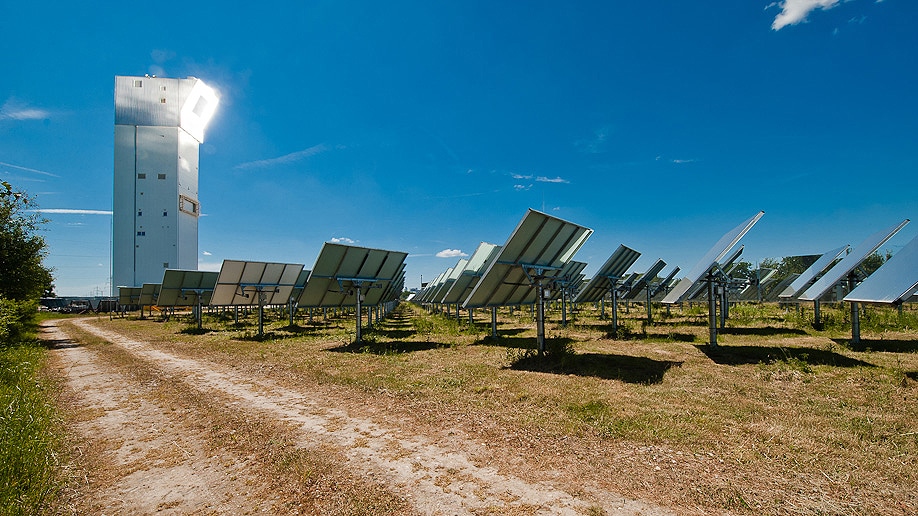May 4 2017
A research team from Karlsruhe Institute of Technology (KIT) along with their European partners plan to build an advanced sulfur-based storage system for solar power. Mass chemical storage of solar power and its overnight use as a fuel are to be realized by means of a closed sulfur-sulfuric acid cycle.
 The sulfur-based technology for the storage of solar energy will be tested at the J�lich solar power tower. (Photo: DLR)
The sulfur-based technology for the storage of solar energy will be tested at the J�lich solar power tower. (Photo: DLR)
In the long run, this could well be the foundation of a cost-effective renewable energy source capable of providing base-load power. The pre-development research under the PEGASUS project will be funded by the EU with EUR 4.7 million.
“Solar power plants effectively capture process heat and sulfur might be a suitable storage material to use this power for base-load electricity production,” Professor Dimosthenis Trimis of KIT’s Engler-Bunte Institute says. Sulfur and sulfuric acid are used in a number of industrial applications. Several chemical processes have already been proven for e.g. sulfuric acid production, vulcanization, or flue gas desulfurization. “To use the combustion of sulfur as a sustainable energy source on an industrial scale, we already have a large kit of process technologies.”
The long-term goal of PEGASUS is the building and demonstration of a state-of-the-art solar power tower facility. A solar absorber is integrated with a thermochemical solar power storage system based on elementary sulfur and sulfuric acid. Compared to existing concepts, this promises to decrease costs considerably. The technology will be examined under real conditions at the Jülich Solar Power Tower Facility (STJ) in Germany. PEGASUS is coordinated by the Institute of Solar Research of the German Aerospace Center DLR.
The partial project performed by KIT focuses on the technical application of combustion. It has planned to create a lab-scale sulfur burner for steady combustion in the range from 10 to 50 kW at high power densities under atmospheric conditions and temperatures over 1400 °C. Power density especially allows for the effective use of sulfur as a fuel for electricity creation.
Although combustion often is associated with fossil technologies, we want to show that it also is an important element in the context of the energy transition.
Trimis
Elementary sulfur is formed by the disproportionation of sulfur dioxide, i.e. conversion of sulfur dioxide into sulfur and sulfuric acid. The focused sunlight of the solar power plant supplies the process heat with the temperature and energy necessary to close the sulfur cycle and to convert sulfuric acid back into sulfur dioxide in the presence of suitable catalysts. Sulfur dioxide also is the combustion product of sulfur.
Along with the project partners, viability of the overall process will be demonstrated. A comprehensive flowsheet will be drafted and the enhanced integrated process scaled to the 5 MW thermal power level will be analyzed. There is a plan to develop prototypes of the main components, such as the solar absorber, sulfur trioxide decomposer, sulfuric acid evaporator, and sulfur burner and to examine them at the solar power tower facility. Furthermore, the materials needed for heat absorption, transfer, and storage and for the catalysts of the chemical reactions are planned to be analyzed for long-term stability and efficiency.
The concept envisioned for solar power tower facilities is characterized by the usage of an economical heat storage medium. Application of the stored energy in a burner makes these power plants capable of offering base-load power. In the long run, system costs will be lesser than projected for photovoltaic systems.
Partners of the PEGASUS project are the Karlsruhe Institute of Technology, the German Aerospace Center (DLR) and the Center for Research and Technology CERTH (Greece). The industry partners are Brightsource Industries from Israel, Processi Innovativi, Italy, and Baltic Ceramics, Poland. The project is funded under the EU Horizon 2020 Framework Programme with EUR 4.695 million.